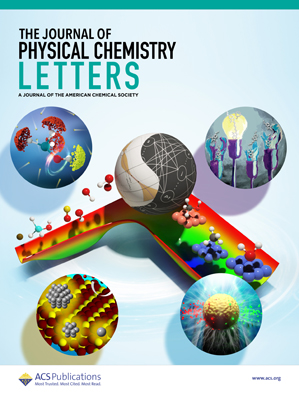MoS2/ZnO异质结的应变工程光电和HER行为:DFT研究
IF 4.6
2区 化学
Q2 CHEMISTRY, PHYSICAL
引用次数: 0
摘要
通过两种或多种二维材料的耦合合理设计异质结被认为是通过捕获太阳能来有效提高光催化氢性能以应对日益严重的全球能源危机的可行策略。本文提出了一种基于第一性原理模拟的功能MoS2/ZnO异质结。我们的研究结果表明,MoS2/ZnO异质结中的光生电子和空穴遵循特定的Z-scheme路径,高度促进氧化还原反应并优化可见光区域的光学性质。在外部应变下,MoS2/ZnO异质结表现出更好的HER性能和出色的光收集能力。有趣的是,在- 5%的压缩应变下,异质结的HER自由能仅为- 0.04 eV,突出了其光催化制氢的潜力。我们观察到,随着拉伸双轴应变的增加,光谱的吸收边缘逐渐向红外区移动,而压缩双轴应变导致吸收光谱的蓝移。此外,所有异质结的太阳能制氢(STH)效率都超过10%,表明它们能够储存足够的太阳能。我们的工作为探索氢能领域中具有通过外部应变调节其活性的高效光催化剂提供了一种新的策略。本文章由计算机程序翻译,如有差异,请以英文原文为准。

Strain Engineering the Optoelectronic and HER Behavior of MoS2/ZnO Heterojunction: A DFT Investigation
The rational design of heterojunctions by coupling two or more two-dimensional (2D) materials is regarded as a feasible strategy to efficiently enhance photocatalytic-hydrogen performance by capturing solar energy to address the increasing global energy crisis. In this work, a functional MoS2/ZnO heterojunction is proposed based on first-principles simulation. Our results reveal that the photogenerated electrons and holes in the MoS2/ZnO heterojunction follow a specific Z-scheme pathway, highly facilitating redox reactions and optimizing optical properties in the visible-light region. Under external strain, the MoS2/ZnO heterojunction demonstrates improved HER performance and remarkable optical-harvesting capabilities. Interestingly, the HER free energy for the heterojunction is only −0.04 eV under −5% compressive strain, highlighting its promising potential for photocatalytic hydrogen production. We observe that the absorption edge of the spectrum shifts gradually to the infrared region with increasing tensile biaxial strains, whereas compressive biaxial strains result in a blue-shift absorption spectrum. Additionally, all heterojunctions achieve excellent solar-to-hydrogen (STH) efficiencies exceeding 10%, demonstrating their capability to store sufficient solar energy. Our work offers a novel strategy for exploring highly efficient photocatalysts in the field of hydrogen energy with the ability to modulate their activity through external strain.
求助全文
通过发布文献求助,成功后即可免费获取论文全文。
去求助
来源期刊

The Journal of Physical Chemistry Letters
CHEMISTRY, PHYSICAL-NANOSCIENCE & NANOTECHNOLOGY
CiteScore
9.60
自引率
7.00%
发文量
1519
审稿时长
1.6 months
期刊介绍:
The Journal of Physical Chemistry (JPC) Letters is devoted to reporting new and original experimental and theoretical basic research of interest to physical chemists, biophysical chemists, chemical physicists, physicists, material scientists, and engineers. An important criterion for acceptance is that the paper reports a significant scientific advance and/or physical insight such that rapid publication is essential. Two issues of JPC Letters are published each month.
 求助内容:
求助内容: 应助结果提醒方式:
应助结果提醒方式:


